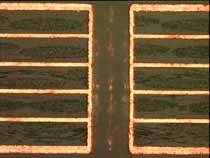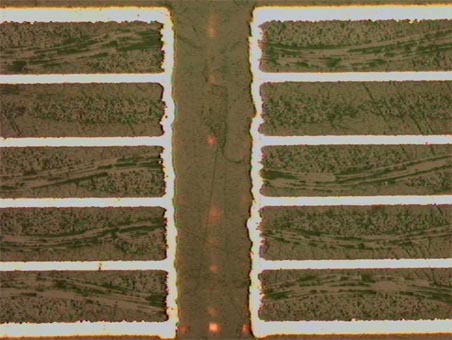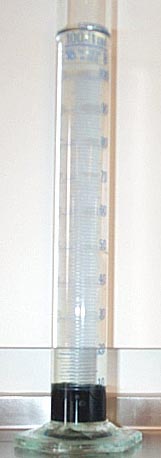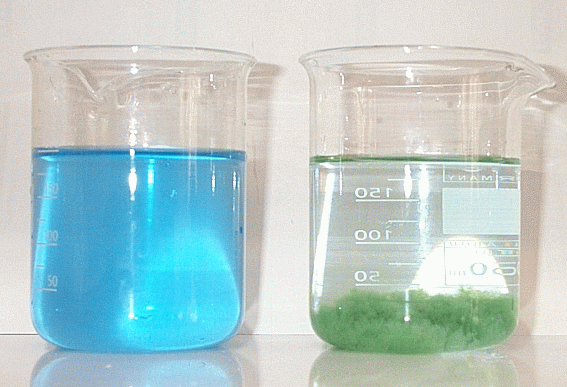
INNOVATORS
OF THE MOISTURE DRILLING SYSTEM®
AND
WASTEWATER TREATMENT TECHNOLOGY SCANPOL®
Company Products
-
The following products you may purchase from us:
Moisture
Drilling System®
-
What is Moisture Drilling?
QUALITY
Moisture
drilling reduces friction on the drill, thereby considerably enhancing
its cutting effect:
- Cleaner
cutting of glass fibre bundles
- significantly
reduce nail heading
- less
resin smear
- less
pink ring
- smooth
hole walls
PRODUCTIVITY
The productivity
of a drilling machine depends primarily on the stack height of circuit
boards. With moisture drilling the stack height can be increased
by up to 100% The
”lubricating” chemistry effect, obtained with Cutting Related
Solution 9106 substantially reduces registration deviation from
true centre when drilling through high stacks. The drill remains
precisely positioned, allowing throughtout higher stacks to be
processed.
REDUCED
WEAR ON DRILL
The cooling
and lubrication provided by moisture drilling result in even wear
on the drill:
- little
or no edge breaking
- even
wear on cutting edge
- less
grinding required when resharpening
- greater
number of resharpenings possible
AN
OUTLINE OF ITS MANY ADVANTAGES
IMPROVED
HOLE WALL QUALITY
- smooth
hole walls
- less
smear
- excellent
drilling registration
- less
nail heading
PLEXIGLAS
DRILLING
- doubled
infeed rate
- swarf
free small holes
- added
dimensional stability
SPECIAL
MATERIALS WHICH BECOME EASIER TO DRILL
- plexiglas
- polyimide
- teflon
- metal
core, thermal clad
- back
planes
TOP
SCANPOL® PRODUCTS FOR WASTEWATER TREATMENT
Industrial
Wastes
Industry production processes create a variety of wastewater pollutants,
some that are difficult and/or costly to treat. Waste water characteristics
and levels of pollutants vary significantly by industry. Additionally,
fluctuations may occur in the waste water's daily and hourly flow,
temperature and composition. In some instances, several waste
streams from different processes at an industry location may discharge
at the same location.
Discharges from industrial facilities can be direct or indirect.
Direct discharges are made directly to a waterway or water body.
Indirect discharges are usually made to Publicly Owned Treatment
Plants (POTWs), and the discharge is treated by the POTW. Additionally,
some facilities participate in source control that utilizes water
reuse, waste minimization or pollution prevention to reduce or
eliminate discharges of pollutants.
Conventional cleaning technology
Metal hydroxide precipitation is the standard method for removing
harmful metals from metal finishing waste water. This is achieved
by adjusting the pH of the waste water with an alkaline reagent
to deposit the dissolved metals and settle and remove the resultant
metal hydroxide precipitates. This procedure usually needs pre-treatment
prior to metals precipitation, such as the oxidation of cyanide
(CN-) or reduction of chromium hexavalent (Cr6+), to deal with
substances that interfere with the precipitation.
Nucleation agents are also used to enhance the settling of fine
precipitates. The use of nucleation enhances the performance of
the cleaning procedure so that the metal concentration in effluents
after purification is characteristically one order of magnitude
lower than after treatment without added nucleation agents . Nucleation
agents can be a co-precipitated metals such as iron that is added
as the sulphate/chloride salt to provide co-precipitation with
ferric hydroxides. An excess of co-precipitation metal also masks,
to some degree, complexing agents present in waste waters.
SCANPOL® treatment technology
SCANPOL® products are developed in the line of Swedish environmental
law that is forcing development of chemicals that have lowest
impact on the environment. Therefore our developed SCANPOL® products
for wastewater treatment are principally base on inorganic chemistry.SCANPOL®products has been developed especially for the treatment
of spent rinse water, half concentrates and concentrates from
Metal Finishing, PCB and painting industries and Energy Sector.
SCANPOL®products precipitates contaminations and heavy metals
from the solutions. It is especially adopted for the treatment
of spent solutions when low discharge of heavy metals, phosphates
and fluorides is demanded. The most suitable way to control the
treatment is in proportion to the flow. It is very suitable for
a through flow or a batch treatment plant.
The precipitated metals form stable flocks which settles very
rapidly and are easy to separate. The clear decant contains a
very small amount of suspended solids and the COD, phosphorus
and fluoride content is significantly reduced.
| SCANPOL® 20 |
WWT
reduction of heavy metals, P,F,COD |
| SCANPOL® 27 |
WWT
reduction of heavy metals, P,F,COD |
| SCANPOL® 31 |
WWT
reduction of heavy metals, P,F,COD |
| SCANPOL® 40 |
WWT
reduction of heavy metals, P, F, COD
|
| SCANPOL® 51 |
WWT
flocculant |
| SCANPOL® 54 |
WWT
flocculant |
| SCANPOL® 55 |
WWT
flocculant |
SCANPOL® 87
|
WWT
reduction of heavy metals, P,F, COD |
| SCANPOL® 216 |
WWT
reduction of heavy metals and COD |
Download additional information above SCANPOL® products
TOP
|
 Control
box for MDS
Control
box for MDS
 Separator
for MDS
Separator
for MDS

Cross
section of hole drilled with MDS 0.35 mm 10000 hits, 2 panels
in stack

Cros section of hole dry drilled 0,35 mm 10000
hits, 2 panels in stack
HIGHER
THROUGHPUT
- especially
when drilling small holes
- for
double sided PCB 25-50%
- for
multilayer PBC 33-100%
IMPROVED
EFFICIENCY
- increased
throughput per machine
- longer
drill bit life
- less
entry and back-up material usage
- standard
back taper drills can be used for multilayer boards
SCANPOL® 27
This product may be used at treatment of spent solutions when low discharge of phosphate, fluoride and heavy metals is demanded. Product needs to be continuously stirred during dosing to normalisation step at pH 2,0-2,5. When treating liquids containing traces of hexavalent chromium, Cr+6 is reduced to Cr+3 even in an alkaline medium. The pH of SCANPOL 27 is slightly acidic 1,3-3,0.
SCANPOL® 30
This product should be used when demands for low discharge of heavy metals and phosphate is expected. This product gives lower amount of sludge in comparison with standard iron chloride/ calcium chloride method. Product is delivered as ready to use solution and is acidic.
SCANPOL® 40
This product should be used when demands for low discharge of heavy metals, fluoride and phosphate is expected. This product gives lower amount of sludge in comparison with standard iron chloride/ calcium chloride method. Product is delivered as ready to use solution and is acidic.
SCANPOL® 51, 54, 55
Those products are mainly acryl amid polymers and are used as help to coagulate achieved precipitation. Products are powders and should be used as 0,05-0,1% water solution. Which of those product give optimal coagulation have to be find by laboratory trials.
SCANPOL® 87
With help of this product wastewater may be treated if low content of heavy metals, phosphor and COD is demanded. If heavy metals need high precipitation pH, please use SCANPOL® 40 as precipitation aid. SCANPOL® 87 is delivered as ready to use solution and is acidic.
SCANPOL® PRODUCTS AND APPLICATION
Comparison
of sludge volume at the same dosing ratio of FeCL3 and SCANPOL® products
   FeCL3 SP®40 SP® 27 FeCL3 SP®40 SP® 27

Rinse
water after ammonia etch treated with SCANPOL® 27
|







 FeCL3 SP®40 SP® 27
FeCL3 SP®40 SP® 27